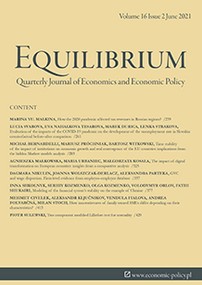The effects of membership in the Polish National Cittaslow Network
The effects of membership in the Polish National Cittaslow Network
Author(s): Eliza Farelink, Agnieszka Stanowicka, Wioletta WierzbickaSubject(s): Energy and Environmental Studies, Environmental Geography, Rural and urban sociology, Economic development, Environmental interactions, Tourism
Published by: Instytut Badań Gospodarczych
Keywords: Cittaslow; slow city; network of cities; city development;
Summary/Abstract: Research background: Identification of the effects achieved by cities owing to their membership in the Cittaslow network plays a role not only in the development of every city, but also in the growth of national and international Cittaslow networks. Being a member of the Cittaslow network, and thereby adopting the slow city development model, affects the process of urban management by directing it towards such activities that agree with the assumed development concept. The achieved effects, manifested in the social, economic, and spatial spheres, contribute to the improved quality of life in a slow city, which in turn influences its development. Purpose of the article: Identification of the effects of membership of Polish cities in the Polish National Cittaslow Network. Methods: The study included a diagnostic survey method. The diagnostic survey based on a standardized survey questionnaire was used to identify the effects achieved by the Polish cities in the Cittaslow network. The survey was addressed to mayors of all member cities in the Polish National Cittaslow Network. The survey was conducted in May 2020. Findings & value added: The most important effects to date of cities being members of the Polish National Cittaslow Network, and their scale, have been investigated. An attempt was made to determine in which areas of urban life the effects become observable in a relatively short time (a few years), and which effects are attainable after a longer period of time. Major barriers to obtaining the desired effects were also identified. The research fills in a gap in this scope, as it provides a complex analysis of the effects of the membership of cities in the national Cittaslow network as seen by the city authorities. The results can serve to make comparative analyses of the effects achieved on different levels of development in the national Cittaslow networks, particularly in view of the fact that the Polish National Cittaslow Network is the second largest network in the world with respect to the number of member cities.
Journal: Equilibrium. Quarterly Journal of Economics and Economic Policy
- Issue Year: 16/2021
- Issue No: 1
- Page Range: 139-167
- Page Count: 29
- Language: English

